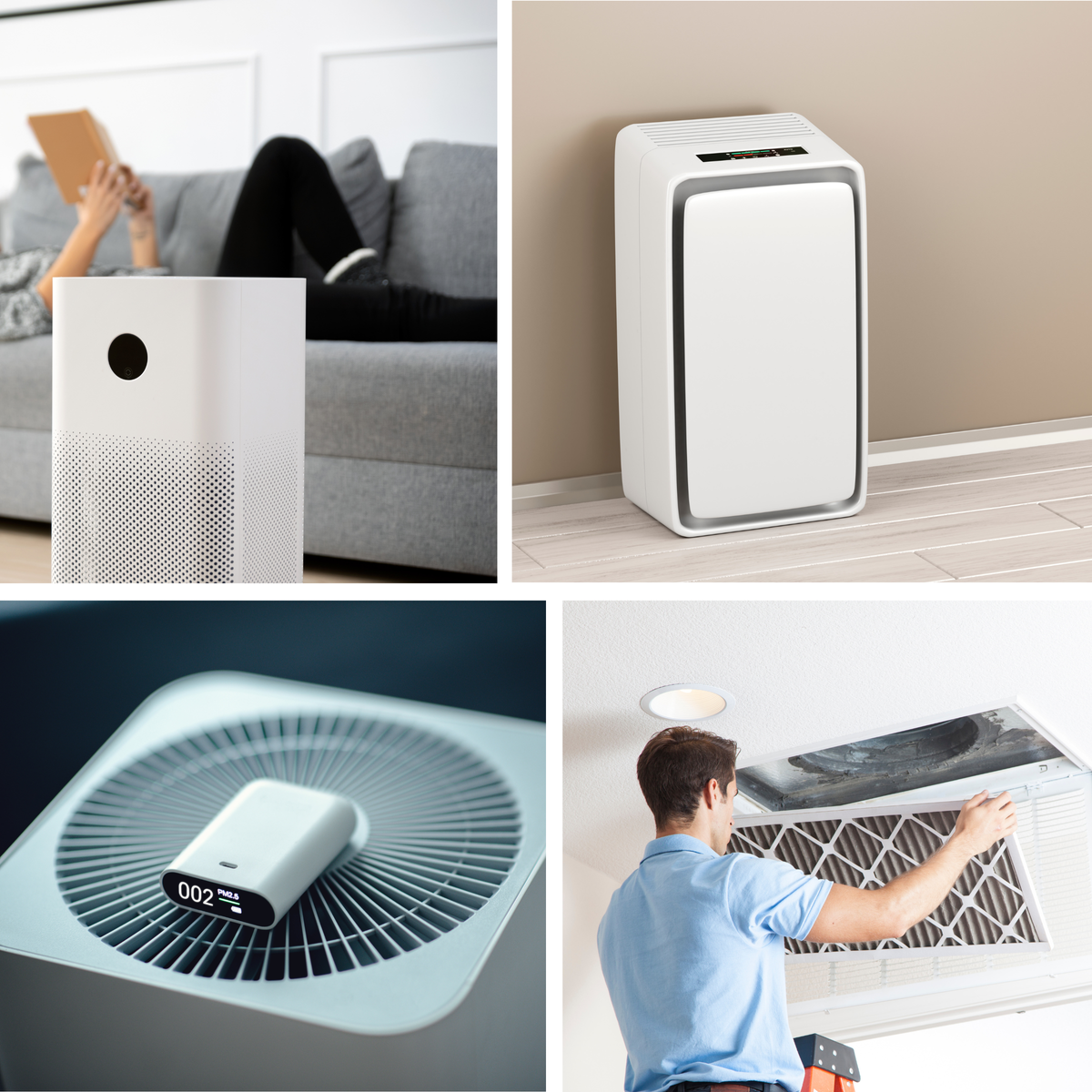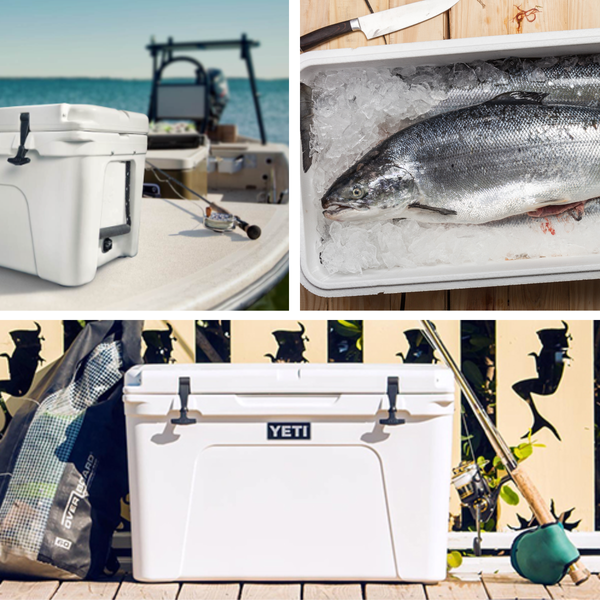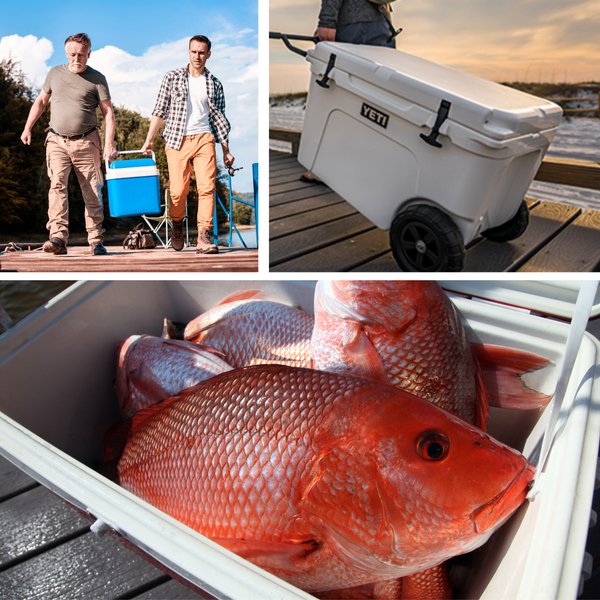Air purifiers have become a staple in many households and offices, aiming to improve indoor air quality and protect our health. However, with the plethora of options available, it's easy to get lost in the marketing jargon and make a purchase that doesn't suit your needs. In this comprehensive guide, we'll explore the pitfalls to avoid when selecting an air purifier.
Key Takeaways:
- Understand the types of filters and their maintenance requirements to avoid unnecessary costs and inefficiency.
- Consider the size of your space and the purifier's capacity to ensure effective air filtration.
- Be aware of additional features and their actual benefits to avoid overspending on unnecessary functionalities.
Ignoring Room Size Compatibility
When buying air purifiers, one of the first mistakes people make is overlooking the importance of room size. Air purifiers are designed to clean air within a certain cubic feet range effectively. If you choose a unit that's too small for your space, it won't be able to cycle all the air through its filters as needed, leaving many airborne contaminants untouched. Conversely, a too-large purifier can consume excess energy without additional benefits.
Overlooking Filter Types and Lifespan
HEPA filters are the gold standard in air filtration, capable of capturing fine particles, including pollen, dust mites, and pet dander. However, not all HEPA filters are created equal. Some air purifiers boast a "True HEPA filter," which meets strict standards to trap at least 99.97% of particulate matter. Always check the specifications to ensure you're getting the right air filter. Additionally, consider the lifespan and cost of replacement filters. Regular filter replacements are crucial for maintaining air quality, and neglecting this can lead to decreased efficiency and higher running costs.

Disregarding Noise Levels
Noise levels are a critical aspect often overlooked when buying air purifiers. A unit that's too loud can disrupt sleep and become a nuisance in your daily life. Check the decibel ratings and look for systems with a 'quiet operation' feature, especially if you plan to use the air purifier in a bedroom or office where silence is appreciated.
Underestimating the Importance of CADR
The Clean Air Delivery Rate (CADR) measures how well an air purifier works in terms of airflow and efficiency in removing smoke, pollen, and dust. A higher CADR means the unit can filter more air in less time, which is crucial for maintaining cleaner air in your environment. Don't overlook this rating, as it's a clear indicator of the purifier's effectiveness.
Not Considering Specific Health Needs
If you or someone in your household suffers from allergies, asthma, or other respiratory issues, it's essential to choose an air purifier that can address those specific health needs. Look for features like UV light, which can kill airborne viruses and bacteria, or an activated carbon filter that can absorb odors, tobacco smoke, and volatile organic compounds (VOCs).

Misjudging the Efficacy Against Various Pollutants
When considering how air purifiers work, it's crucial to understand that not all devices are equally effective against different types of air pollution. Some air purifiers are designed to tackle larger particles like dust and pet dander, while others are more adept at capturing smaller pollutants such as bacteria, viruses, and volatile organic compounds (VOCs). It's important to identify the specific pollutants present in your environment and select an air purifier that is capable of filtering those contaminants. For instance, if you're looking to reduce the presence of chemicals from cleaning products or paint, you'll need a purifier with an activated carbon filter.
Moreover, the efficiency of air purifiers in removing other particles like pollen, mold spores, and smoke is also a key consideration, especially for individuals with allergies or respiratory conditions. Air purifiers with HEPA filters are renowned for their ability to capture 99.97% of particles as small as 0.3 microns, making them an excellent choice for those looking to breathe cleaner air inside their homes. Always check the specifications of the air purifier to ensure it meets your needs, and remember that no air purifier can remove 100% of all pollutants. Sure, here are two new sections for your article:
Overlooking Smart Features and Connectivity
When planning to buy an air purifier, it's easy to get caught up in the basic functionalities and overlook the advanced smart features that modern devices offer. Many energy-efficient air purifiers now come with smart connectivity options, such as Wi-Fi and Bluetooth, which allow you to monitor and control your device remotely. This means you can adjust settings, check air quality, and receive filter change notifications all from your smartphone or tablet, ensuring that your purifier is always functioning optimally.
Furthermore, some smart air purifiers are equipped with sensors that can detect changes in air quality, automatically adjusting their operation to maintain a healthy environment. This adaptive technology not only enhances the user experience but also contributes to energy efficiency by optimizing the purifier's performance to suit real-time conditions. By not considering these smart features, you might miss out on the convenience and additional control they provide over your indoor air quality.

Considering the Impact of Design and Aesthetics
While the primary function of an air purifier is to clean the air, it's also important to consider how the device will fit into your living space from a design perspective. Air purifiers come in various shapes, sizes, and styles, and selecting one that complements your home's aesthetics can contribute to a more pleasant environment. An air purifier with a sleek and modern design can serve as a conversation piece, while a more discreet model can blend seamlessly into the background.
In addition to aesthetics, the design of an air purifier can influence its performance and noise level. For instance, a well-designed air purifier with strategically placed vents and a solid construction can operate more quietly, which is especially beneficial in bedrooms or study areas. When you buy an air purifier, take the time to evaluate how its design will impact both its functionality and its integration into your home to ensure you're making a choice that satisfies all your preferences.
Assessing the Impact on Indoor Air Quality and Health
Buying an air purifier is a step towards improving the air inside your home, which can have a significant impact on health, particularly for those suffering from respiratory issues or heart disease. Air purifiers work by cycling the air in a room and passing it through filters to remove pollutants and other particles that can exacerbate health problems. By reducing the concentration of these pollutants, air purifiers can help individuals breathe easier and potentially reduce the risk of health complications associated with poor indoor air quality.
However, it's essential to choose an energy-efficient air purifier to ensure that you're not trading air quality for increased energy consumption and higher bills. Energy-efficient models not only help to keep operating costs down but also contribute to a lower environmental impact. Look for air purifiers with an Energy Star rating to ensure that you're getting a device that will not only help you breathe better but will also be kinder to your wallet and the planet in the long run. Remember, a healthier indoor environment starts with informed choices about the devices we use to maintain it.
Falling for Unnecessary Features
Many air purifiers come with additional features that may sound impressive but aren't always necessary. For example, while features like Wi-Fi connectivity and remote control can offer convenience, they don't directly contribute to the unit's air purifying capabilities. Focus on the features that matter most for air quality, such as the type of filters used, air change rate, and energy efficiency.

Ignoring Energy Efficiency
Energy efficiency is an important consideration, especially if you plan to run your air purifier continuously. Look for units with an Energy Star rating to ensure that your air purifier won't lead to a significant increase in your electricity bill. Energy-efficient models not only save money in the long run but also contribute to a lower carbon footprint.
Overlooking the Potential of Ozone Production
Some air purifiers, particularly those with ozone generators or photocatalytic oxidation, can produce ozone as a byproduct. Ozone exposure can be harmful to your lungs and exacerbate chronic respiratory diseases. It's crucial to avoid air purifiers that produce ozone, especially if health is a primary concern.
Not Researching the Brand and Warranty
The market is flooded with air purifiers from various brands, each with different reputations for quality and customer service. Researching the brand, reading customer reviews, and understanding the warranty offered can save you from future headaches. A reputable brand with a solid warranty can offer peace of mind and ensure that you're investing in a reliable unit.
Forgetting About Maintenance and Operating Costs
The initial purchase price of an air purifier is just one part of the overall cost. Maintenance, including regular filter replacements, can add up over time. Some air purifiers have washable pre-filters, which can help reduce ongoing costs. Be sure to factor in these expenses when choosing the right air purifier for your budget.
Summary
Selecting the best air purifier requires careful consideration of various factors, including room size, filter types, noise levels, CADR, specific health needs, energy efficiency, ozone production, brand reputation, and maintenance costs. By avoiding common pitfalls and focusing on what truly matters, you can ensure that you invest in a unit that will effectively improve indoor air quality and contribute to a healthier living environment.
FAQ Section
Q: How often should I replace the filters in my air purifier?
A: The frequency of filter replacements varies depending on the air purifier model and usage. Generally, HEPA filters should be replaced every 6 to 12 months, while activated carbon filters may need to be replaced every 3 months. Always refer to the manufacturer's guidelines for specific recommendations.
Q: Can air purifiers eliminate all contaminants from the air?
A: While air purifiers can significantly reduce the number of contaminants, such as dust, pollen, pet dander, and some gases, they may not eliminate all pollutants completely. It's important to combine the use of an air purifier with other good practices, like regular cleaning and proper ventilation.
Q: Are air purifiers with UV light safe to use?
A: Yes, air purifiers with UV light are safe to use as long as they are designed correctly and do not produce ozone. The UV light is contained within the unit and is used to kill bacteria and viruses, helping to sanitize the air. Always ensure that the product complies with safety standards and regulations.










